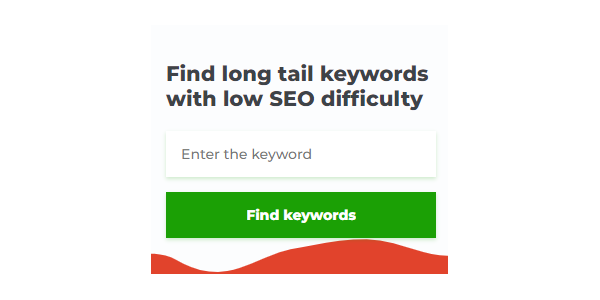
In terms of website design, accessibility, and usage, it is evident that the mobile experience is the main factor. Initially, web design focused on desktops as the primary devices for accessing sites. However, mobile devices have now become the predominant means by which people access websites. Smartphones and tablets are widely used and serve as the primary method for individuals to search for and access your website.
What does it imply for your internet presence? The necessity to implement mobile optimization.
Mobile Optimization
Mobile optimization involves designing your website with mobile users in mind by considering site design, structure, page loading speed, assets, and user experience. This practice aims to increase the likelihood of mobile users connecting to your page and encourages increased engagement with the pages on your site.
Mobile optimization is not just limited to web pages, but is also crucial for all aspects of digital marketing. Just like users tend to use mobile devices to browse websites, they are equally likely to use these devices to read emails and view social media posts.
Why Does Mobile Optimization Matter
Let’s examine the current behavior of customers in digital spaces. The Pew Research Center on the Internet and Technology reveals that Americans are now spending more time on mobile devices. Take into account the following statistics on mobile usage:
- 96 percent own a cellphone of some kind
- 81 percent own a smartphone, up from 35 percent on 2011
- Almost three-quarters own a desktop or laptop computer
- Nearly half own a tablet and nearly half own an e-reader
- Roughly one in five Americans use a smartphone as their primary device for connecting to the Internet
The reality is that smartphones are omnipresent, and nearly everyone you are attempting to communicate with possesses one.
Current patterns in mobile usage.
According to recent studies, for the first time ever, mobile internet usage has surpassed desktop usage. This emphasizes the significance of mobile optimization for businesses involved in digital marketing.
The popularity of mobile shopping is increasing as people are increasingly using their smartphones or tablets to make online purchases. This trend has been further boosted by the COVID-19 pandemic, as it has made people more inclined to shop online.
Businesses must ensure their social media content is optimized for mobile devices because platforms like Facebook, Instagram, and Twitter are predominantly accessed through these devices.
The popularity of mobile apps is on the rise, as users are spending more time on apps and using them as their primary means to access content. This shift highlights the significance of businesses focusing on creating mobile apps that prioritize user experience.
Design that is responsive.
To ensure that their websites are user-friendly on all devices, businesses must prioritize responsive design as a crucial aspect of mobile optimization.
Responsive design is an approach to web design that centers on crafting websites that adapt to various screen sizes and devices, ensuring a smooth user experience. It enables websites to be easily accessed on mobile devices while preserving their functionality and user experience.
The significance of responsive design in mobile optimization.
By employing responsive design, websites are made accessible and legible on all devices, resulting in an enhanced user experience and engagement.
A responsive website increases traffic and improves conversions by offering a smooth user experience on all devices, thereby attracting more visitors.
Google has stated that it gives preference to websites that are mobile-friendly and provides them with better search engine rankings as a result.
By being cost-effective, responsive design saves businesses time and money as there is no need to create separate mobile and desktop versions of the website.
Advantages of optimizing for mobile devices.
Mobile optimization offers improved user experience, as it aims to provide seamless browsing, easy navigation, and quicker load times on mobile devices. This enhanced user experience can lead to increased engagement and higher conversion rates.
Mobile optimization has the potential to greatly enhance engagement and conversions.
Having a mobile-optimized website can assist businesses in reaching a broader audience and boosting conversions, as more individuals use their mobile devices to access the internet. Mobile-optimized websites ensure fast loading times and provide a user-friendly interface, facilitating convenient browsing and purchase-making for users.
Google has emphasized that mobile-friendliness plays a crucial role in determining the ranking of websites, leading to improved search engine rankings.
If a website is optimized for mobile devices and provides a smooth user experience while loading quickly, it has a higher chance of ranking higher on search engine results pages (SERPs) compared to a website that is not optimized. This, in turn, can lead to more traffic and potential customers.
Mobile optimization gives a competitive edge to websites over non-optimized ones. By enhancing user experience and boosting conversions, a mobile-optimized website has a higher likelihood of being chosen by users compared to a non-optimized website.
One benefit of having a mobile-optimized website is an improvement in brand reputation. When a brand offers a smooth mobile experience, users tend to view the brand more positively. This positive perception can result in higher customer loyalty and advocacy for the brand.
Strategies for optimizing mobile devices
Responsive design is a method of web design that emphasizes the creation of websites that can adapt to varying screen sizes and devices in order to offer a smooth user experience.
Responsive design ensures that the website layout adapts to the screen size, thereby ensuring that the content can be easily read and navigated on any device. This improves user experience, enhances engagement, and can potentially contribute to better search engine rankings.
Mobile-first design is a method that prioritizes the design of a website for mobile devices initially, and subsequently adapts it for larger devices.
With the increase in mobile usage, mobile-first design guarantees that the website is optimized for mobile devices, delivering a smooth user experience for mobile users. Mobile-first design has the potential to enhance user experience, boost engagement, and generate more website traffic.
The purpose of Accelerated Mobile Pages (AMP) is to enhance the performance of mobile web pages through an open-source project.
AMP pages are a great choice for businesses that want to enhance their website for mobile devices, as they load rapidly and offer a smooth user experience. These pages are specifically designed to be lightweight, ensuring quick loading on any device, which in turn can enhance search engine rankings and boost engagement.
Mobile-specific content and features cater to mobile devices, ensuring users a smooth experience by being specifically optimized for them.
Examples of content and features designed specifically for mobile devices include videos that are optimized for mobile viewing, menus that are easy to navigate on a small screen, and services that are based on the user’s location. The inclusion of mobile-specific content and features can enhance the user’s experience, boost their level of engagement, and generate higher levels of website traffic.
Making Your Website and Marketing Mobile Optimized
Your marketing strategy should incorporate various components for mobile optimization to maximize the effectiveness of your websites.
Website Tips for Mobile Optimization
Think about SEO
What is the reasoning behind wanting a mobile-optimized site? In short, it’s because of Google. Since September 2020, Google has shifted to prioritize mobile-first indexing, meaning that their web crawlers prioritize indexing mobile-first pages on the internet.
If you do not build your site mobile-first, it will receive a lower ranking. This implies that your website should be constructed in a way that ensures Google does not penalize you in search results, considering aspects like photo sizes and metadata.
The speed of a webpage.
If images, charts, or other content take too long to load on any of our devices, we tend to cancel and search for alternatives because we are impatient. To guarantee faster loading of your pages, make sure to decrease the size of your files, condense your code, minimize redirects, and utilize browser caches.
Optimize your server response time by identifying and addressing bottlenecks that cause your page to slow down. These bottlenecks may include inadequate memory, sluggish database queries, or slow routing. By resolving these fixable issues, you can significantly improve your server response time.
Alter the way you approach the process of design.
In the past, web developers were able to use strategies to handle mobile situations. However, Google now requires a consistent solution for mobile and all devices, using CSS, images, and JavaScript. It is important to avoid using Flash or pop-ups.
When considering the “Fat Finger” mistake, take into account the potential for errors that may occur when typing or pressing buttons.
If the size of the buttons on your website is either too small or too large, or if there are elements on your page hindering easy finger scrolling, you will encounter unintentional clicks that can negatively impact the user experience.
Please maintain a focus on the local area
With the increase in “near me” searches, having accurate and correctly formatted Google business listings is crucial for local businesses.
Please rephrase the text below while maintaining the same meaning, but do not add new information or remove any information. Also, remember to include titles and meta descriptions. Text: “Essential Steps for Effective Problem Solving” Title: “Key Measures for Successful Problem-solving” Meta Description: “Discover the essential steps that will help you effectively solve problems and overcome challenges efficiently with our expert guidance.”
To ensure your website remains user-friendly and improves its visibility on search engines, pay attention to the size of titles, meta titles, and meta descriptions in mobile experiences. By optimizing these elements, you can maximize clicks and enhance e-commerce opportunities.





